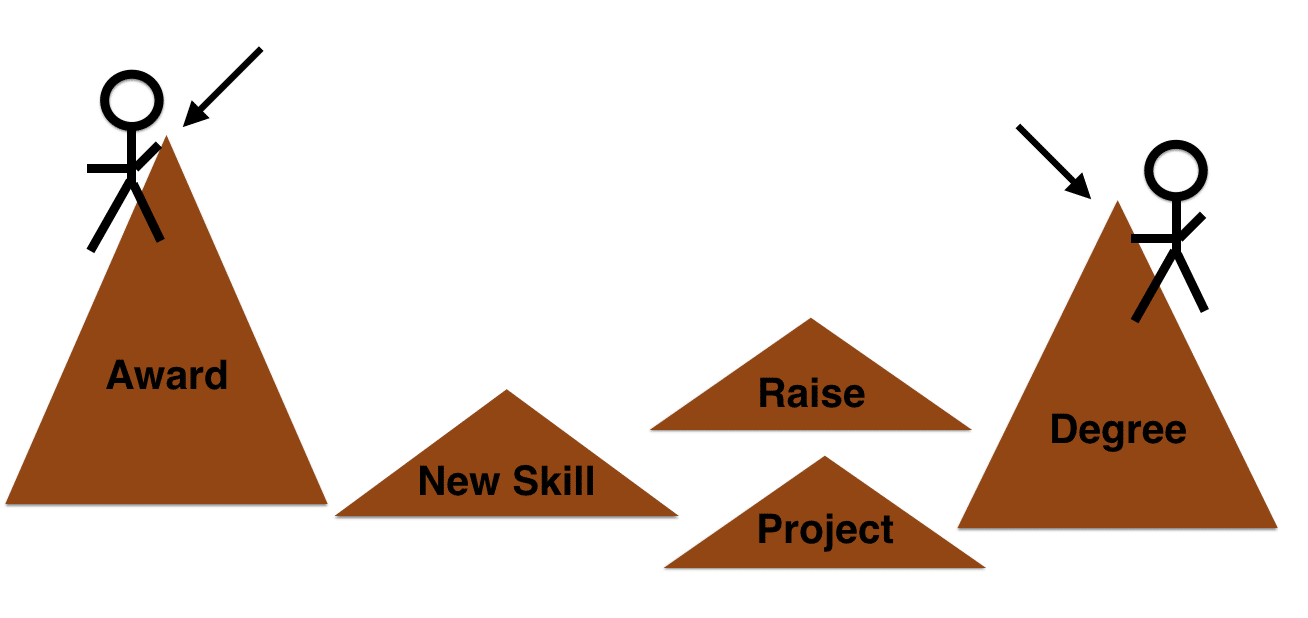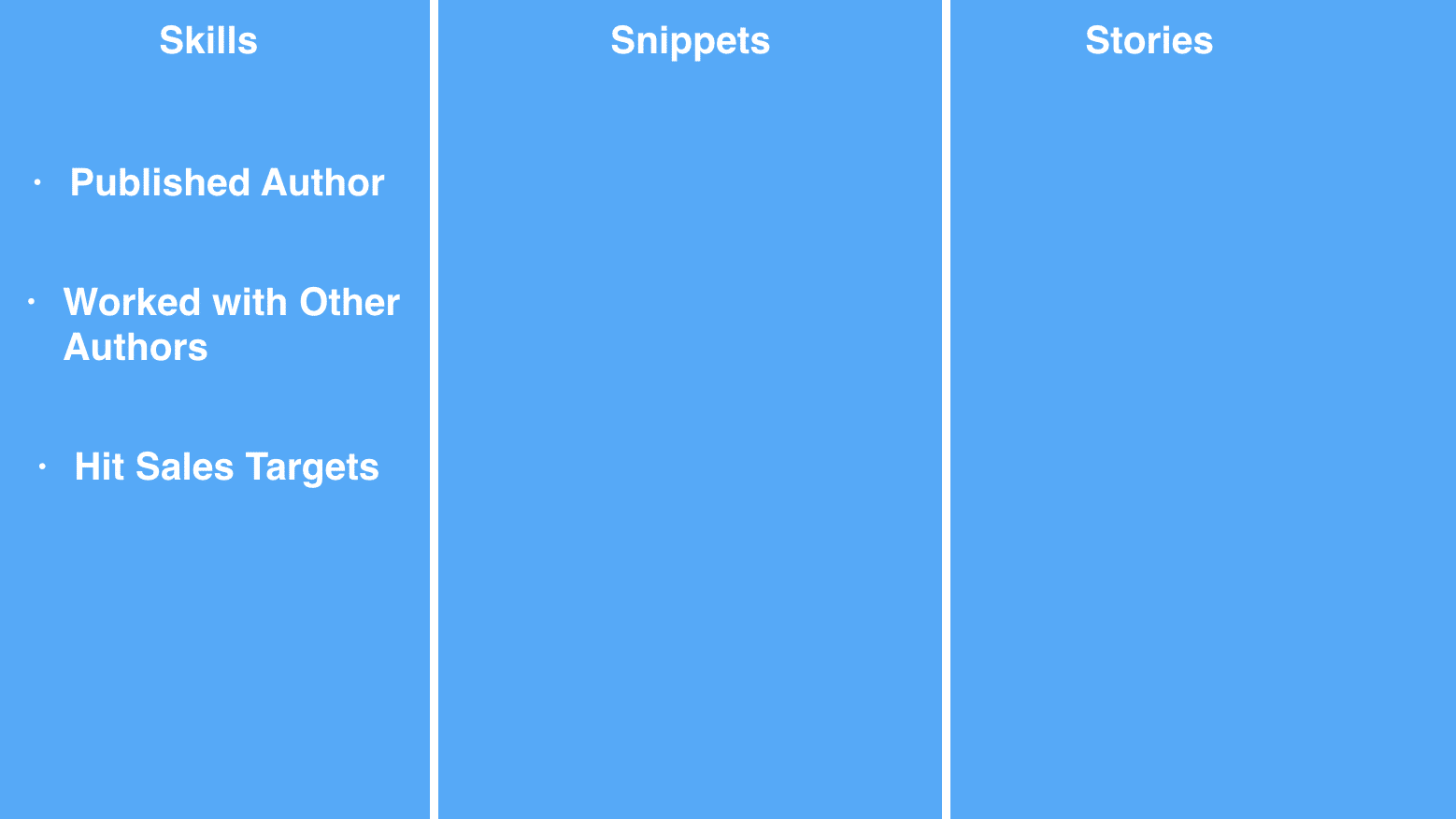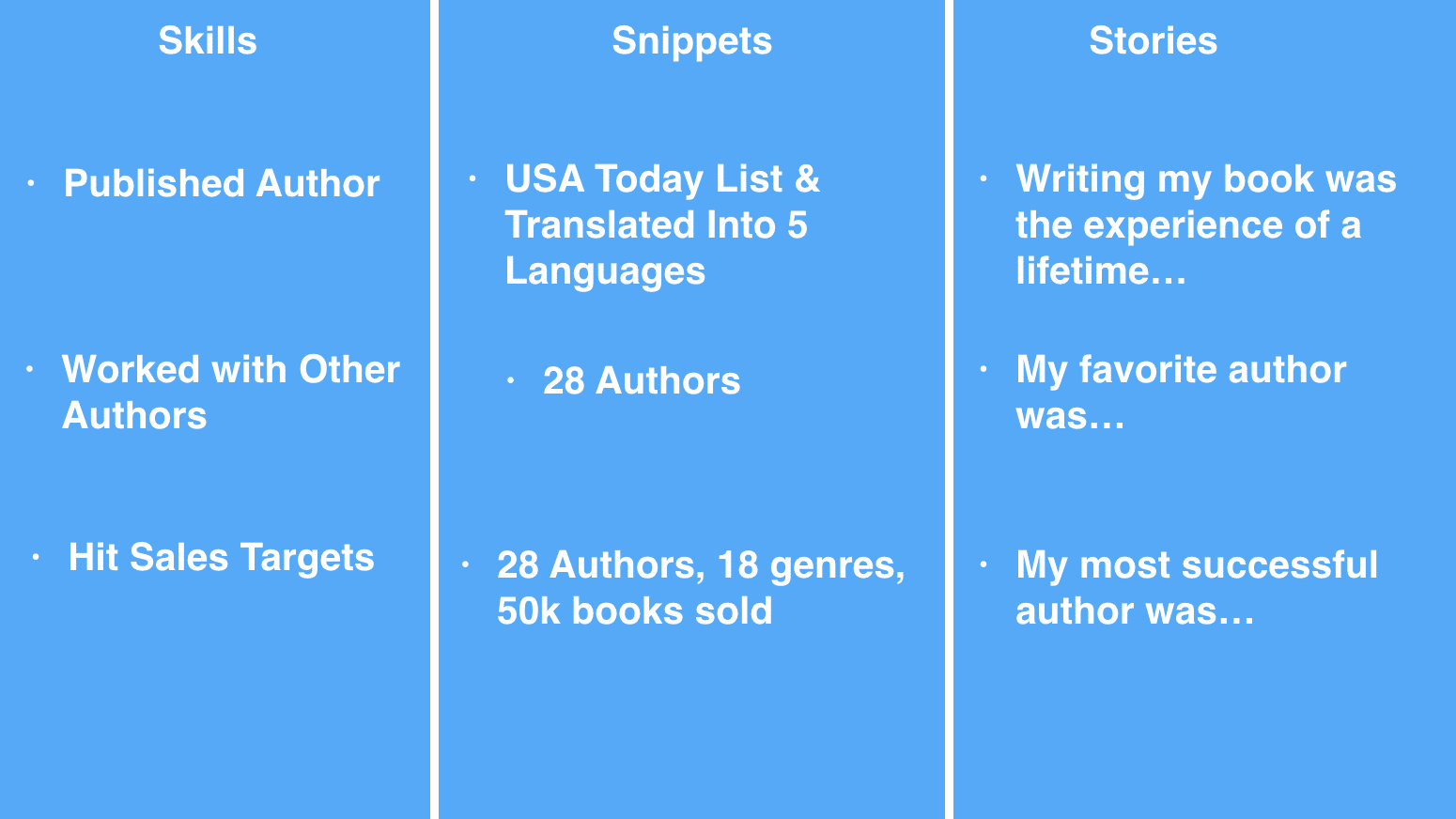You have an interview—how do you talk about your successes without sounding immodest?
You have to pitch yourself—how do you toot your own horn without blowing it?
You’re in an elevator with your boss—how do you share your accomplishments without sounding like a total narcissist?
There is nothing worse than talking with a self-promoter as they pelt you with their resume skills, how many people they know or how good they are at what they do.
No one wants to be with that promoter and no one wants to be the promoter.
Here’s the problem: Sometimes our accomplishments don’t speak for themselves. Sometimes we don’t get the credit we deserve. Sometimes we have to pomote our successes because no one else will.
Here’s my big idea:
Don’t brag, don’t boast, do best.
Besting is a softer, more genuine form of bragging. It is a simple combination:

Besting is how you showcase your best self and your best work in a gracious and genuine manner. As much as you don’t want to talk about yourself, you have to learn this skill for career growth.
Proper bragging is an essential skill for professional success.
Why?
- Sometimes you don’t get the credit you deserve.
- I wish good work spoke for itself, but sadly this isn’t always the case.
- People are so focused on getting their own success, they sometimes forget to recognize yours. Gently reminding them is NOT boastful, it’s smart.
So, how do you best? Here’s how you can talk about yourself without people thinking you are a narcissist.
Do F***ing Amazing Work
This should go without saying, but if you want to best, you have to be the best. While great work doesn’t always speak for itself, you have to have great work to have something real to brag about. Consider the following questions:
- What skill sets you apart from other people in your industry?
- How have your experience, talents and ideas contributed to your success?
- What do you do better than anyone else?
Case-Study:
I recently sat down with an entrepreneur friend of mine named Ben who is raising money for his start-up. He is constantly having to pitch himself and his company. I want to use him as a case-study for this post. First, his company provides a f***ing amazing service. He builds websites and marketing plans for authors.
- Skills: Unlike most other companies, he knows what authors need to market their book in addition to having a great website. So he customizes the experience for them.
- Experience: He is an author himself and a self-taught web designer. He knows authors’ needs because he has them himself. He has worked with over 28 authors to perfect the process.
- Besting: He works with the best authors to give them the best website to help them launch their amazing book. He knows his skills, he just has to show them.
What Are Your Peaks?
It’s time to take stock of your successes. And you should only best about the peaks in your life. What do I mean by peaks?
Peaks are your top accomplishments, skills and achievements.

These are the things that set you apart from others and what you feel genuinely proud of. These do not have to be just professional—they can be personal like raising children, they can be hobby-based like volunteering or doing a new activity. Let’s start looking for your peaks:
- In what way are you making a difference in peoples lives?
- What are the five most interesting things about you?
- What is your greatest accomplishment?
- What failures have you overcome?
- What stories about you best showcase your talents?
- What training, education or awards have you received?
Case-Study:
Ben has lots of peaks in his business and professional life. With some prodding, he began sharing them. I took the snippets that are relevant for us:
- “Everyone has a story to share. Most people have a book in them. I want to help them change lives with their story. It kills me that people put their heart and soul into a book and no one reads it. I want to make sure they can focus on the writing, so I can help them with the online presence and marketing.”
- “Helping my authors hit their sales goals and get second and third book contracts is incredible.”
- “I myself have written two books and dealt with the failure of the first one. It was awful, I thought the publisher would help me with marketing—they did not! I decided to teach myself both sides of the book business and then help others with their books.”
Prep Your Best
It might seem silly to prepare your peaks for besting, but this is the same thing you do when you prepare a resume or get ready for an interview. You want to have your bests ready for these moments:
- You have a performance review
- Someone you want to impress asks, “What do you do?”
- You have to give an impromptu speech
- You want to land a potential new client
- You want someone to take you seriously
Look at the two lists you made above and break down your answers into 2 columns:
Snippets & Stories
You have to be ready to share your bests in 2 different formats. Go through and turn your answers into either snippets or stories (or both if you can!).
A snippet is a short, pithy mention of an accomplishment. It is perfect for elevator pitches, introductions and quick meetings.
A story is a longer, detailed description of a skill or accomplishment. It is perfect for interviews, performance reviews and speeches.
Case-Study:
We put Ben’s skills into a chart like this:

Then we broke down each skill into a snippet—a short number or mention and stories—a way to share a longer version of the accomplishments.

This is a really easy way for Ben to best easily in any situation. This is just like preparing for an interview. You should know your skills and the stories and numbers to prove it. For example, he has worked with tons of authors, he should mention their numbers in a brief snippet (great for press mentions or elevator pitches) and also his favorite most successful authors (great for speeches and testimonials).
Get Proof
Proof is a great way to add to your besting and it takes the pressure off of you having to say me, my and I all the time. The best proof is in:
- The Numbers: Can you add statistics or numbers to your accomplishments?
- Social Proof: Do you have testimonials or can you quote someone else about your accomplishments?
- Credibility: Media, celebrities and well-respected brands can give you credibility.
Case-Study:
Ben is able to mention specific sales numbers and his book being listed on USA Today’s top books list. He is also able to use testimonials on his website and tell stories using real well-known author names. He could also say he has worked with authors from Random House, Crown, Penguin & Hudson Street Press.
Best With People Not At Them
Your best list is not a resume. We compiled it like a resume, but you never want to list off bullets of your accomplishments. This is not only boring, but also sounds like boasting, not besting. Here’s how to best right:
Show excitement. Humility does not means acting passé. In fact, this can be off putting. For example, someone I spoke with recently told me he went to Harvard—impressive! But he said it in such a negative way that I had to ask him if he had a bad experience. He explained that he has only had a negative experience telling people he went to Harvard. Ouch! If you can’t be excited about sharing your best, don’t share it (or share it in a story instead of a snippet!)
- Don’t best without being asked. If someone asks what you do, tell them and share a quick best snippet. If someone asks about your wife, don’t segue into your latest raise.
- Evoke curiosity. The best way to help someone ask you about your besting is to share a tiny snippet about an accomplishment and see if they show interest. For example, Ben often tells people he is a writer. If they ask what he writes then he can say he has written a best-selling book. He doesn’t start with that, he evokes curiosity for people to ask. And if people don’t—no worries! They probably wouldn’t be interested in your best anyways.
Best With Reciprocity
This is incredibly important. When you best, you want to do it with reciprocity. What do I mean by this? You want to keep the other person in mind as you best. Here’s how:
- Never speak longer than them. Yup, besting has to be done succinctly and with respect to the people you are speaking with. My general rule is that you should only give an answer as long as theirs. So if you asked them how they got into their line of work and they spoke for a minute, you should also only best for a minute. This is respectful and helps prevent you from looking like you are sucking up all the air in a conversation.
- Transition to their best. After you are done sharing a best ALWAYS make a transition. There is nothing worse than sharing an accomplishment and having the conversation die. Sometimes this happens on accident, sometimes this happens because people don’t know what to say. When you best, try to end by teeing them up for one too. For example, here’s what Ben says:
“I wrote a best-selling book a few years ago and now work with authors to get their books to be best sellers. Have you ever considered writing a book about your life?”
This cues up the other person to share their story and legacy.
Best with Relevance
A few weeks ago, I was in Los Angeles at a networking event and a gentleman I was speaking to told me he was a sports agent. He then began to best…or boast by telling me all of the elite athletes he reps. Now, the only thing I know about sports is that in Football they sometimes make goals and in Baseball there is a halftime. He started to list names and I was embarrassed, but honest that I didn’t know them. Then he kept trying. And trying. He should have realized that name dropping athletes was not a way to best with me, in fact it only made me more embarassed. Think about this:
- Who do you want to best to?
- What is relevant to them?
- What do you want to leave them with?
Case-Study:
Ben’s number one goal is meeting and helping other authors. So, he formulates his bests around this. First, he sees if his listener is a reader—if they don’t read books, they probably won’t have heard of his authors or care. Then he gauges how interested the person he is speaking with is in writing a book. If they don’t want to write a book, no problem, he shares inspiring stories about people and asks if they know any inspiring people to connect him with. Bingo! This helps him stay relevant to the person he is speaking with AND gets him more leads.
Tell Them What You Want Them to Remember
People are busy, people are preoccupied, people need you to cue them. What do I mean by this? You should tell people exactly how they should remember you.
- Use metaphors. Do you treat the cars in your shop like babies—handle them with the utmost care? Share the metaphor and call yourself the car babysitter. This is much easier to remember than “the top car autobody shop east of Detroit.”
- Give yourself the tagline you want. Every good movie has a tagline. Most companies have mottos. What’s yours? If you don’t have a good title for yourself, people will come up with their own—and it might not be one you will like.
- Ask for the specific person you want. Usually we best to get business, to get work or to impress someone. State this! Ben wants to work with new and successful authors. He tells people this. They remember. Then he asks for connections to people they know.
Let Your Materials Speak for Themselves
Feel too embarrassed to share your snippets or stories? Put your media logos on your card, list testimonials on your website, write your tagline on LinkedIn or in your email signature. Sometimes your materials are the best way to best.
Case-Study:
Ben hates to brag about his numbers. So he lists them right at the top of his LinkedIn profile and on the homepage of his website. He always gives out his card and asks people to connect with him on LinkedIn so they are likely to see it without him having to mention them.
Your Best List
Do you update your resume every few months? You should! Same with what I call a Best List. This is a place where you record your successes, stories and accomplishments. I like to break it down by need. I have a Word document in my computer with different sheets called:
- Media Mentions
- Good for Introductions
- Good for Clients
- Good for Press
- Testimonials
- For Performance Reviews
- For Resume
- For Interviews
Each sheet has my two columns of snippets and stories. I just quickly add to it whenever a good story or something comes up. You have to do the same!
If you must, set your calendar to update this Best List.
This way you can immediately go to that page when you have an interview or a speech or a new client pitch. It is really hard to remember these on the spot, so having this list is essential.
Bonus: Easy Ways to Best
There are some easy opportunities you can take to best. Don’t miss these:
- Accept compliments! Don’t argue with people when they praise you. It’s not humble, it’s unkind to the person complimenting you. Just say, “My goodness you are too kind, thank you so much.”
- Ask for feedback. Whenever you do speeches, pitches or performance reviews ask for the good and the bad feedback. The bad feedback will help you improve and the good feedback you can save for your best list.
- Make Connections. This is important so I am highlighting it:
Every time you are in a meeting, make eye contact, shake hands and introduce yourself to everyone there.
Before you can best, people have to know who you are! The first step to becoming memorable and sharing your accomplishments is establishing rapport.
Remember: You deserve credit. Your accomplishments are worthy of recognition. But people have to know about your talents in order to applaud you for them!
